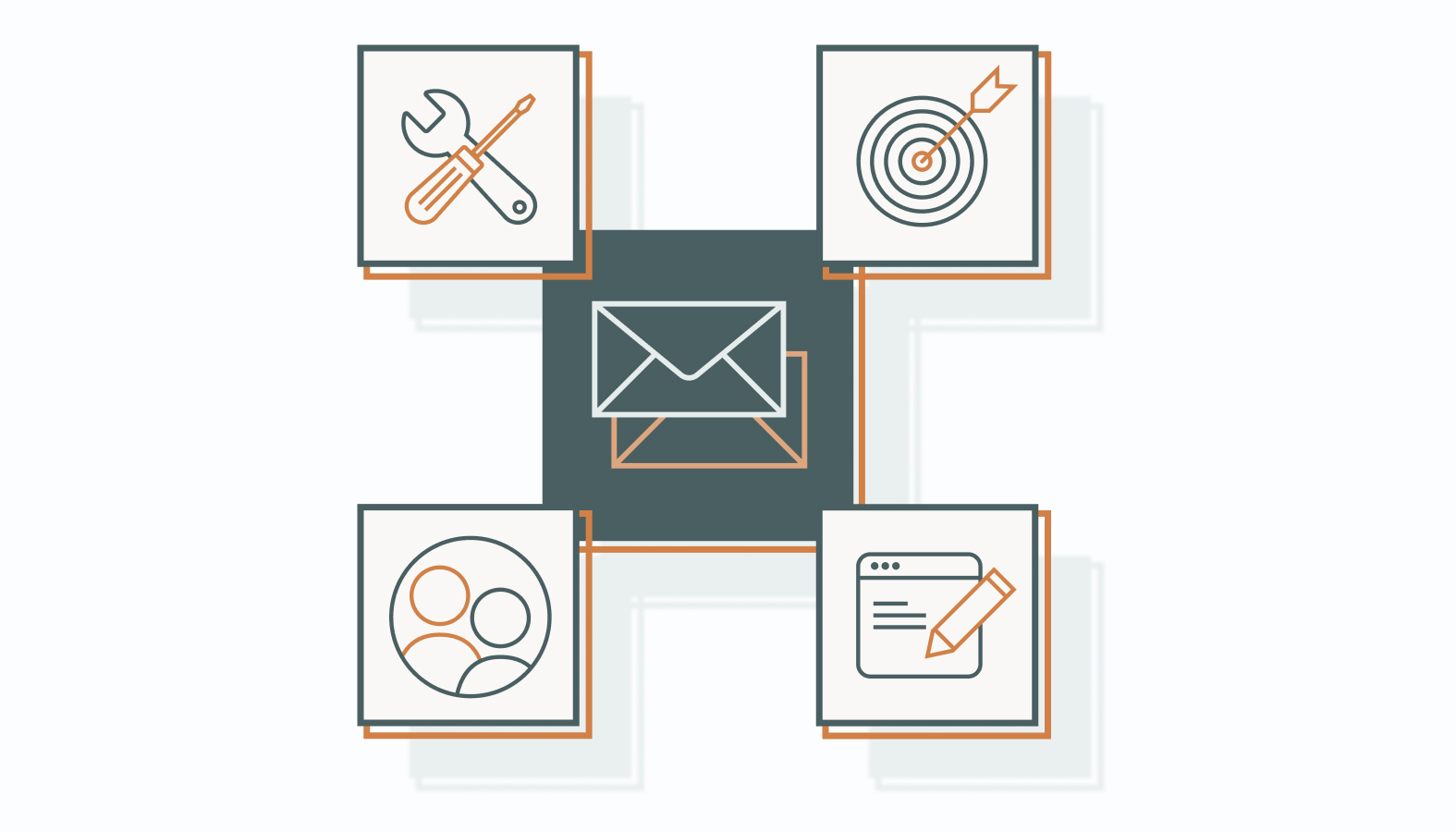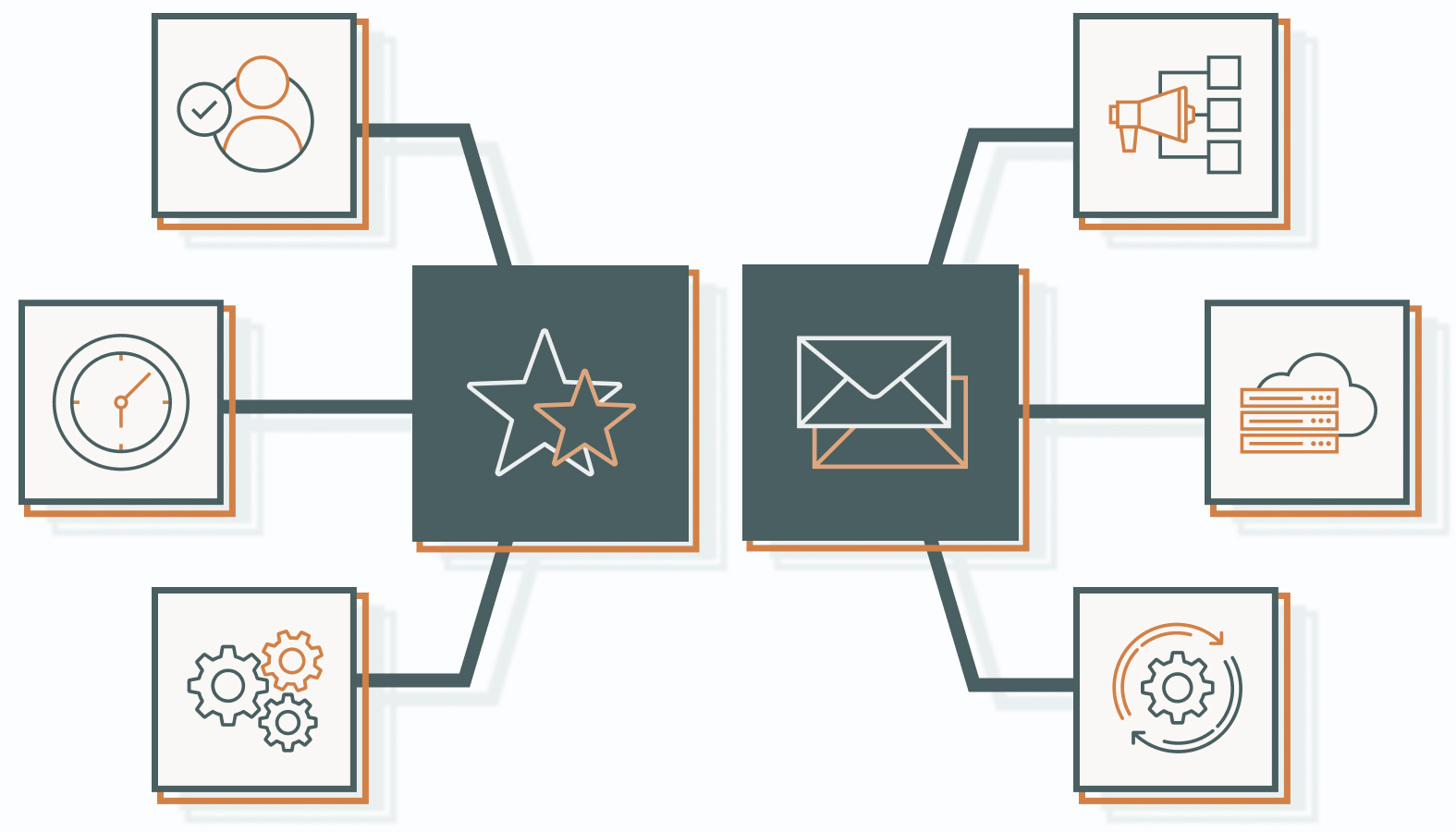Email marketing remains one of the most potent tools for driving engagement in today’s digital landscape. Yet, managing every message, segment, and timing manually is a recipe for burnout and missed opportunities.
That’s why businesses are turning to a strong email marketing automation strategy to take control.
However, automation isn’t a magic bullet. Without a clear plan, it can add to the clutter rather than reduce it. The real advantage lies in pairing automation with a well-thought-out strategy to deliver better experiences, build stronger relationships, and achieve tangible outcomes.
In this guide, we’ll walk you through designing a strategy that’s not only simple to manage but also scalable for future growth.
Exploring the Basics of Email Marketing Automation
Email marketing automation is a game-changer for cutting through the noise and staying consistent, relevant, and timely without sinking hours into manual tasks.
This section breaks down how email automation works and why it matters for the success of modern businesses.
What is Email Automation?
Email automation leverages software to send messages based on user behavior and timing rules. Instead of crafting each email from scratch, you define the logic once, and the system executes the rest.
The foundation of automated email campaigns includes:
- Triggers start the process (like a new subscriber or a cart left behind).
- Workflows map out the sequence and timing.
- Segmentation ensures the right content hits the right inbox.
It’s a simple framework that makes scaling personalization possible.
Benefits of Email Automation
Automation offers significant advantages that redefine how businesses engage their audiences.
Boosting Customer Engagement with Timely, Relevant Emails
Automation helps you reach customers when it matters most.
Whether it’s a welcome email right after sign-up or a gentle nudge to complete a purchase, well-timed messages feel personal and drive action.
By delivering the right content at the right moment, you make every interaction count.
Reclaiming Time and Improving ROI
By eliminating manual tasks, automation allows marketers to focus on what truly impacts performance: strategy, testing, and creative execution.
The result? More efficient workflows and sharper campaigns that yield stronger returns without exhausting your team.
Making Personalization Scalable
Automation makes it feasible to personalize at scale without guesswork. By segmenting based on actual behavior and preferences, you can deliver content that resonates.
When the right message reaches the right audience, engagement soars, and conversions follow.
How to Build Your Email Marketing Automation Strategy
A successful automation strategy doesn’t begin with tools; it starts with a plan. Without structure, automation becomes noise; with it, every email serves a purpose, and every send propels the campaign forward.
1) Choose the Best Automation Tools
Don’t chase features. Select tools that align with your strategy and can scale with your business. Consider:
- Scalability: Can it grow with your business and accommodate increasing email volumes?
- Integration: Will it seamlessly integrate with your existing CRM, website, and other marketing platforms?
- Usability: Are workflows intuitive, or will your team avoid using them?
- Customization: Can you build logic that actually reflects your customer journey?
- Analytics: Does it show what’s working and what needs fixing?
The right tool does more than send emails. It empowers you to do more with less, sharpening your entire strategy.
2) Define Clear Goals and Objectives
Automation without defined goals is just noise on repeat. To make it count, start by defining success upfront: whether it’s more opens, higher clickthrough, or increased revenue per send.
Clear targets sharpen your focus, align your strategy with business priorities, and make every message work harder.
When your goals are specific and measurable, your testing becomes more focused, your content sharper, and your campaigns deliver real results.
3) Segment Audience Effectively
Generic emails yield generic results. To boost engagement, segment your audience based on what drives their behavior.
Start with the essentials:
- Demographics: Age, location, job role, or company size.
- Behavior: Purchase history, browsing habits, and email activity.
- Psychographics: Values, goals, and what keeps them up at night.
The more relevant your message, the less it feels like noise and the more likely it is to convert. Well-executed segmentation makes your campaigns feel personal, not programmatic.
4) Master Writing Emails that Resonate
Personalization is more than just inserting a name into the subject line. It’s about relevance. Use behavior, intent, and data to craft emails that feel tailor-made for the individual, not the list.
- Trigger messages based on real actions, like cart abandonment or product views.
- Use dynamic content that reflects what they’ve browsed, bought, or shown interest in.
- Send offers aligned with their goals, not your internal calendar.
When content matches the customer, engagement feels natural. And when relevance becomes the rule, conversions follow.
Designing Mobile-Friendly Emails
If your emails don’t work on mobile, they don’t work — period. With most users opening emails on phones first, mobile optimization isn’t a nice-to-have. It’s mission-critical.
Why Mobile Optimization Matters
Most emails are opened on mobile. If your layout isn’t designed for smaller screens, performance suffers. Cramped formatting, unreadable text, and hard-to-tap buttons frustrate users and cost you clicks.
Poor mobile design can lead to:
- High bounce rates: People close emails they can’t read.
- Lower conversions: Small or misplaced CTAs don’t get action.
- Brand damage: Sloppy presentation reflects poorly on your user experience.
Mobile-first design ensures your message looks sharp, functions properly, and delivers results across devices.
Best Practices for Mobile-First Email Design
Mobile users scroll quickly and tap even faster. To capture their attention, ensure every part of your email works on smaller screens. Here’s how to make it happen:
- Use responsive layouts that adjust automatically to screen size.
- Keep content concise. Every word should serve a purpose.
- Choose legible fonts, ideally 14px or larger for body text.
- Stick to a single column for more effortless scrolling and better flow.
- Compress images to speed up load times and scale properly.
- Design finger-friendly CTAs with enough space and clear labels.
A well-optimized mobile email does more than look good — it delivers results. When design aligns with user habits, attention holds longer, actions are easier, and your message lands exactly where it needs to.
Advanced Email Automation Techniques
Once your foundation is solid, actual growth comes from refinement. Advanced automation makes every interaction more intentional and connected, transforming campaigns into engines of scale and retention.
Using AI and Machine Learning to Sharpen Performance
Artificial intelligence (AI) and machine learning (ML) give marketers a competitive edge by automating real-time decisions based on behavior and trends.
- Smarter Personalization: AI fine-tunes subject lines, product suggestions, and messaging to match individual behavior and preferences — at scale.
- Predictive Timing: Machine learning pinpoints the optimal time to send emails based on engagement patterns, increasing the odds of action.
- Churn Signals: Algorithms detect early signs of disengagement, enabling you to trigger re-engagement efforts before it’s too late.
With these tools, messaging becomes more relevant, deployment faster, and optimization easier over time.
Connecting Email with the Rest of the Marketing Stack
Automation becomes even more powerful when it works across platforms. Coordinating email with the rest of your tools transforms disconnected messages into a unified customer journey.
- Cross-Channel Campaigns: Sync email with social, SMS, and ads to deliver consistent messaging and move users through the funnel with less friction.
- Unified Customer Data: Integrate platforms to build a complete view of customer behavior, ensuring every decision is informed rather than improvised.
- Consistent Execution: Keep branding, tone, and timing aligned across channels to strengthen credibility and create a seamless experience.
A connected strategy amplifies every touchpoint and turns automation into a growth engine.
Navigating the Pitfalls of Email Automation
Even the most well-built automation strategy can backfire if it’s not handled with care. Scale introduces complexity, and the systems you set up to boost performance can just as easily erode trust, relevance, or results.
Here’s how to keep your automation sharp, compliant, and conversion-ready.
1) Keep Personalization Human
Over-automated campaigns lose their edge fast. When emails feel generic, relevance suffers, and performance follows.
To maintain personalization at scale:
- Use dynamic content based on behavior, not just first names.
- Trigger emails from signals that show intent, like product views, search activity, or repeat visits.
- Regularly review automation flows. What worked six months ago might miss the mark today.
Automation should sound like a real person who understands the customer, not a machine that just knows their data.
2) Treat Data Like an Asset and a Liability
Automation runs on data. But if you’re not handling that data responsibly, you’re building on a fault line.
- Align with privacy laws like GDPR and CCPA from the start. Don’t bolt compliance on later.
- Collect only necessary data, with clear consent.
- Encrypt data, set strict access controls, and schedule regular audits to flag potential risks before they become headlines.
Good data practices don’t just protect your brand, they protect your ability to execute long-term.
3) Solve for Deliverability Early
If your emails don’t hit the inbox, nothing else matters. Deliverability issues are often silent killers that creep up over time.
- Clean your lists often. Prune dead addresses and inactive contacts.
- Use email authentication tools like SPF, DKIM, and DMARC to signal trust to providers.
- Keep an eye on bounce rates and reputation scores, and adjust frequency before it becomes a problem.
High deliverability isn’t a given. It’s a result of disciplined execution.
4) Don’t Let Content Go Stale
Automated campaigns aren’t “set and forget.” Static content starts underperforming the moment it loses relevance.
- Review and refresh flows quarterly.
- Update messaging to reflect current customer needs, product updates, or seasonality.
- Run A/B tests on subject lines, copy, and offers to keep engagement high and insights flowing.
Your audience evolves. Your automation should, too.
When you manage the risks, automation becomes an advantage. Stay sharp with your data, keep your content relevant, and audit your workflows often. That’s how you turn automation into a driver of trust, performance, and long-term customer value.
Turn Email Automation Into a Growth Engine
A strong email automation strategy improve campaigns significantly, while transforming how you connect, convert, and grow. When every message is timely, relevant, and easy to manage, your brand shows up consistently and confidently at scale.
To keep the momentum going:
- Choose tools that fit your goals and grow with your team.
- Define what success looks like, then build around it.
- Use thoughtful segmentation and personalization to stay human, even at scale.
- Design for mobile-first attention spans.
- Level up with AI, cross-channel integration, and proactive content updates.
- Protect deliverability, respect privacy, and audit what’s working (and what’s not).
Great automation doesn’t happen by accident. It’s built with intention. When strategy leads and tech supports, you get more than just efficiency. You get impact, loyalty, and a system that actually works for you.
Want a Second Set of Eyes on Your Strategy?
Whether you’re building from scratch or optimizing what’s already in motion, we’re here to help. Our team has worked with businesses at every stage to create winning email automation strategies that connect, convert, and scale.
Schedule a candid conversation with one of our experts, and let’s craft an email strategy built for results. No pressure, no jargon. Just an honest discussion about making your email marketing work harder (and smarter) for your business.









